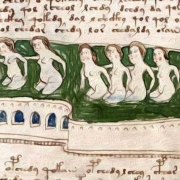A tiny Armenian island in Venice
One of the most fascinating and mysterious places in Italy is an islet in the Venice Lagoon known as St. Lazarus island, home to a Mekhitarist monastery. A small congregation of monks under Benedictine rule live here, in an area of no more than 7,000 m² and they hold their religious ceremonies entirely in Armenian.
For language agencies like ‘Galactus’ which handle translations and transcripts of ancient texts, this is extremely exciting. The monastery’s library retains some 4,500 priceless manuscripts and ancient works which Armenians revere as custodians of their collective and personal history. There are liturgical texts, as well as literary compositions written between the 9th and 18th centuries. This little gem is unknown to most tourists simply because it is off the beaten track. A visit however, is undoubtedly worthwhile and the island can be reached in just a few minutes by ‘vaporetto’ (public water-bus) from Venice.
Translation of the Bible
It is important to note that Armenia was the first nation to declare Christianity a state religion. This occurred in 301 AD during the reign of Tiridates III. Unlike other languages, the Armenian alphabet has a precise inception date. Its “inventor” in 405 AD, was the monk Mesrop Mashtots who, as an itinerant preacher soon came to realise that the population was unable to understand the sacred scriptures because they were written in either Greek or Syrian. He saw the need to translate these sacred texts, especially the Bible, into the Armenian language as translation into the vernacular could facilitate its understanding by the masses. The Armenian language has survived precisely because of the creation of an official alphabet. The translation of religious scripts in fact, heralded a vast literary tradition which continues today.
It goes without saying that the Armenian people continue to suffer an open wound that is difficult to heal and it is little talked about. The Armenian genocide was a terrible point in history which we cannot and must not forget. In Turkey, between 1915 and 1920 almost 1.5 million Armenians paid dearly for their ethnic origins. Mass deportation into the desert and into concentration camps, entire inhabited areas “liberated” and hundreds of properties confiscated by the government which applied legislative measures passed in that period by the Ottoman parliament. Through this small written contribution Galactus would like to keep the memory alive and celebrate, at least in part, the long linguistic and cultural tradition of the Armenian people.
Armenian culture in Italy
In Italy, the Armenian community is well integrated. There are numerous theatrical productions of “Skylark Farm”, a novel by A. Arslan (Rizzoli, 2004), an Italian writer of Armenian origin. Her book, winner of the Premio Stresa (“Stresa Prize for Literature”) in 2004 and translated into many languages, tells of the terrible suffering which the Armenian people were subjected to. The book was made into a film (2007) entitled “The Lark Farm” by Italian brothers Paolo and Vittorio Taviani. For those seeking to study the Armenian language in loco, Italian President, Sergio Mattarella recently inaugurated an Armenian-Italian bilingual stream at a school in Yerevan, the Armenian capital. In Italy meanwhile, a number of prestigious Universities like those in Milan, Venice and Bologna offer Armenian Language and Literature courses.






